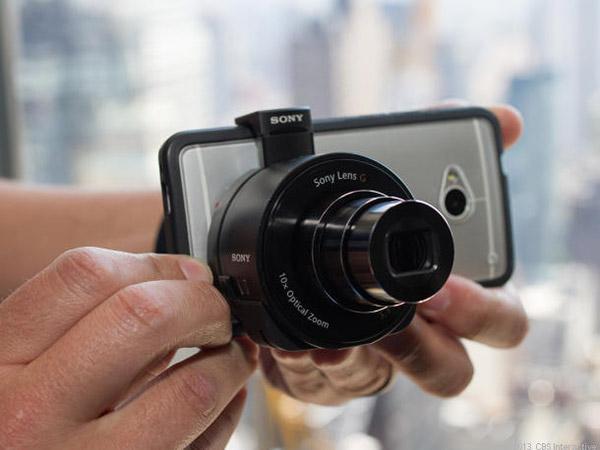
With IFA 2013 going strong in Berlin, we're sure to see a lot of new and interesting products pop up on the mobile market. Although the event doesn't officially start until tomorrow for the public, we've still been seeing a lot of coverage regarding some key products that held early events both yesterday and today. Yesterday we did a lot of coverage regarding Samsung's new Galaxy Note 3 device and their Galaxy Gear smartwatch, but today I'm going to switch gears and give a little love and attention to Sony and what they have in store for us for the second half of the year.
Sony finally announced their Xperia Z1 device, which had been circulating in leaks and rumors regarding it's impressive 20.1-megapixel camera, which turned out to be a rumor that was completely true. But aside from the Z1, Sony also released a very interesting accessory that targets people who are interested in using their smartphone as a camera that can take beautiful photos. This accessory is described as being a "lens camera", which has all the fixings of a camera sans body and screen, which is in turn replaced by your smartphone. Sony's new lens camera accessories are intriguing products that give the best of both worlds for those who want a great camera on top of a great smartphone, but don't necessarily want the hassle of both trying to fit into one integrated device.
Sony created two different size of lens-cameras: The QX10, which will sell for $250, features an 1/2.3-inch 18-megapixel sensor that's paired with an f/3.3-5.9 lens; the QX100 will have a higher price tag at $499 and features a 1-inch 20.2-megapixel Exmor R sensor and a f/1.8-4.9 Carl Zeiss lens. You may be wondering why you would want to purchase an 18 or 20-megapixel camera for up to $500 extra when you could just as easily go with Sony's Xperia Z1 with its rear-facing 20.1-megapixel camera, but the benefits of using Sony's lens camera is that, of course, it's basically what makes designated digital cameras superior to the smartphone alternative. Despite having as many megapixels as they do, most smartphones still use digital zoom, which isn't doesn't take as clear or crisp images as optical zoom can. While digital zoom uses the software to zoom in on a subject, optical zoom physically brings out the lens to get closer to the subject. As of right now, optical zoom is the best way to get a clear image of a subject while zoomed in. While Samsung already managed to incorporate this in their Samsung Galaxy S4 Zoom device, it's not exactly ideal to have a phone with a screen that large to also have a thick body (to support said lens) all of the time.
That's not to say that nobody is interested in having a phone with a great camera attached to the back of it, but the Zoom of course limited people who did want a great camera on the back of their phone to only be able to use a Samsung device. Sony, on the other hand, decided to make the lens available not only across multiple phones, but also across multiple platforms. When the rumors first surfaced of the lens cameras, many people assumed that they would only be available for use on Sony devices. With Sony not necessarily having the most popular phones on the market, this would almost seem like a given. However, they proved us wrong by allowing their lens cameras to be available on Android devices and iOS devices. Given that Sony's devices have thus far only been available through certain carriers in the United States, this seems like a better idea so that the device itself can generate appeal from more consumers.
But is it really worth spending $250 or $500 on an accessory that merely attaches to your phone? It depends on how seriously you take photography, and how much you want a travel-friendly option for a good camera. There's also the benefit that all of your photos are easily accessible right from your phone without having to worry about using cables or messing with a computer just to upload some great shots to social network sites or personal photo albums. For a more casual photographer, the $250 QX10 might seem like a steep price, but that's also around the same price as a decent point-and-shoot. It's still an extra device to tote around, but like I mentioned, you don't have to deal with PCs, cables or memory cards. As for the $500 QX100, I would leave that device to the professionals who are more passionate about photography. For the casual social networker who just wants to take a decent photo, the QX10 seems like plenty enough as it is. But regardless of which one people end up settling for, it's nice to know that the device has a long life, given that you can use it with your next phone (as long as its Android or iOS). As long as you plan on sticking between these two platforms, I would say that for all intents and purposes these lens cameras are worth it. I myself am considering picking up the QX10 and getting rid of my rooty tooty point-and-shooty as I really only share my photos on social networks anyway, and I hate messing with uploading the pictures to my PC.
Readers, what are your thoughts on Sony's new lens camera accessories? Are you thinking about picking up one for your device, or are you content enough with the camera already included in your device? Let us know your thoughts in the comments!
Images via CNet, Engadget